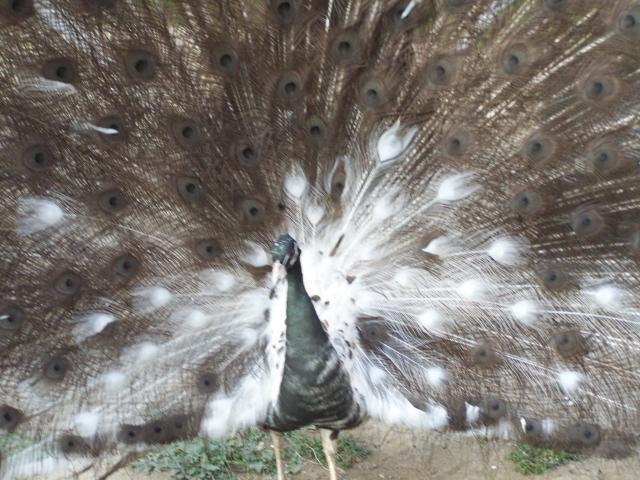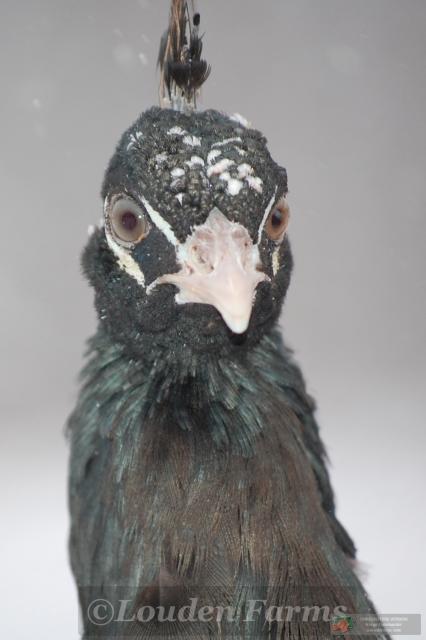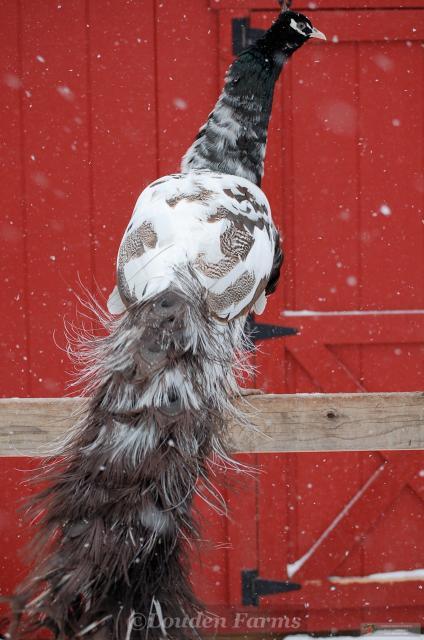In the bronze line of peafowl, this bird like the very first bronze, starts life like and bronze, but with each molt he is different, Myself I was trying to lock this in a line of bronze.
I know alot of peafowl breeders are afraid of this, because in the cameo it is a Lethal gene that cause the birds to go blind.
Doesn't look like its the case in the bronze.
Will post a few pics of him , i no longer have him. BUT HE HAS alway looked different each year.


first year no white

his first white fall molt yearling

have pic as a 2 yr old , little more white , he is never the same.
I know there is a pigeon breed that does this with each molt .....
I know alot of peafowl breeders are afraid of this, because in the cameo it is a Lethal gene that cause the birds to go blind.
Doesn't look like its the case in the bronze.
Will post a few pics of him , i no longer have him. BUT HE HAS alway looked different each year.


first year no white

his first white fall molt yearling

have pic as a 2 yr old , little more white , he is never the same.
I know there is a pigeon breed that does this with each molt .....
Last edited:










 and then it must be something different. But what I don't know.
and then it must be something different. But what I don't know.